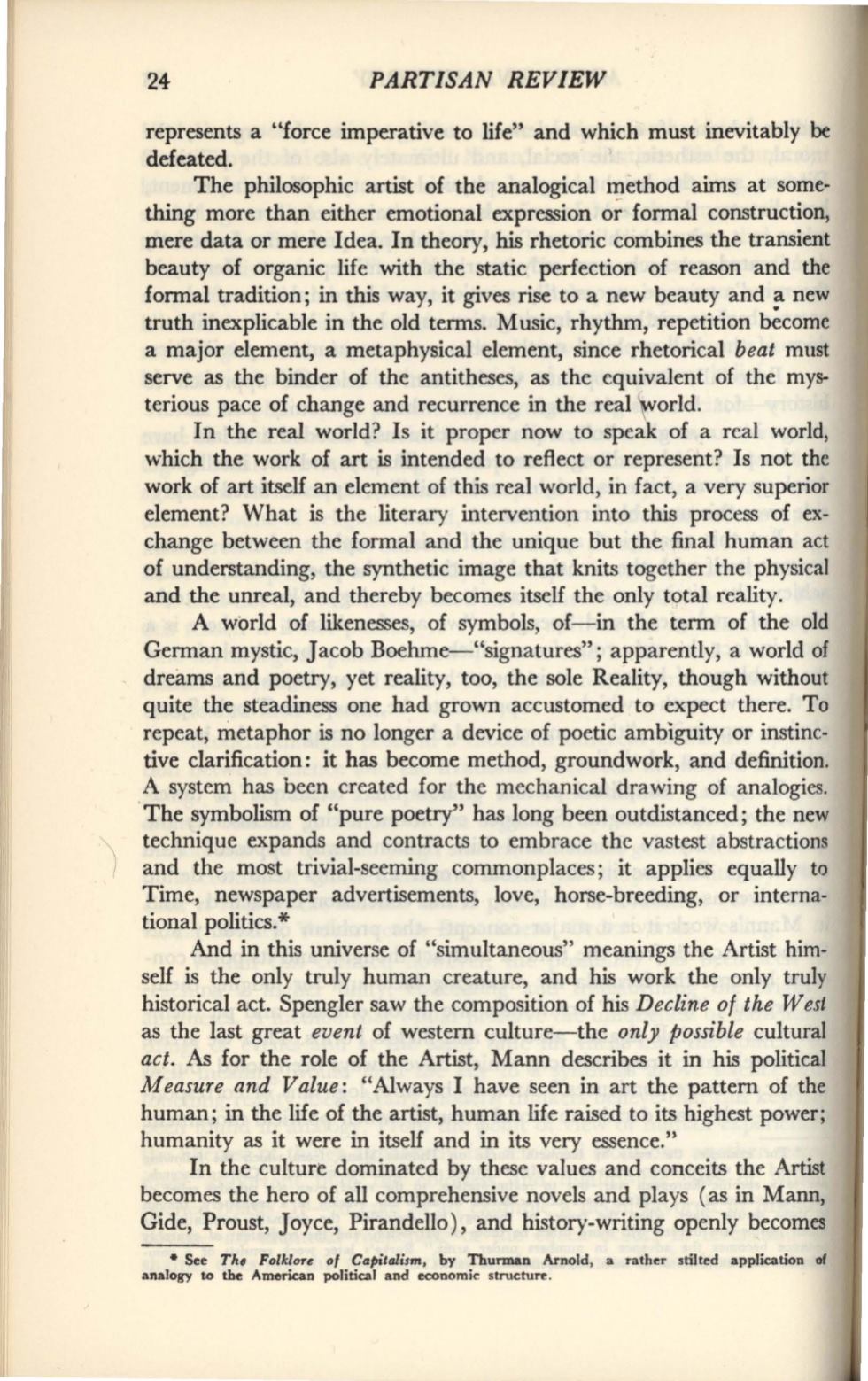
24
PARTISAN REVIEW
represents a "force imperative to life" and which must inevitably
be
defeated.
The philosophic artist of the analogical method aims at some–
thing more than either emotional expression or formal construction,
mere data or mere Idea. In theory,
his
rhetoric combines the transient
beauty of organic life with the static perfection of reason and the
formal tradition; in this way, it gives rise to a new beauty and a new
truth inexplicable in the old terms. Music, rhythm, repetition
b~come
a major element, a metaphysical element, since rhetorical
beat
must
serve as the binder of the antitheses, as the equivalent of the mys–
terious pace of change and recurrence in the real
~orld.
In the real world? Is it proper now to speak of a real world,
which the work of
art
is intended to reflect or represent? Is not the
work of art itself an element of this real world, in fact, a very superior
element? What is the literary intervention into this process of ex–
change between the formal and the unique but the final human act
of understanding, the synthetic image that knits together the physical
and the unreal, and thereby becomes itself the only total reality.
A world of likenesses, of symbols, of-in the term of the old
German mystic, Jacob Boehme-"signatures"; apparently, a world of
dreams and poetry, yet reality, too, the sole Reality, though without
quite the steadiness one had grown accustomed to expect there. To
repeat, metaphor is no longer a device of poetic ambiguity or instinc–
tive clarification: it has become method, groundwork, and definition.
A system has been created for the mechanical drawing of analogies.
The symbolism of "pure poetry" has long been outdistanced; the new
technique expands and contracts to embrace the vastest abstractions
and the most trivial-seeming commonplaces; it applies equally to
Time, newspaper advertisements, love, horse-breeding, or interna–
tional politics.*
And in this universe of "simultaneous" meanings the Artist him–
self is the only truly human creature, and his work the only truly
historical act. Spengler saw the composition of his
Decline of the West
as the last great
event
of western culture- the
only possible
cultural
act.
As
for the role of the Artist, Mann describes it in his political
Measure and Value:
"Always I have seen in art the pattern of the
human; in the life of the artist, human life raised to its highest power;
humanity as it were in itself and in its very essence."
In the culture dominated by these values and conceits the
Artist
becomes the hero of all comprehensive novels and plays (as in Mann,
Gide, Proust, Joyce, Pirandello), and history-writing openly becomes
• See
Th• Folklore of Capitolism,
by
Thurman Arnold, a rather stilted application
af
analogy
to
tbe American political and economic structu,..,,


